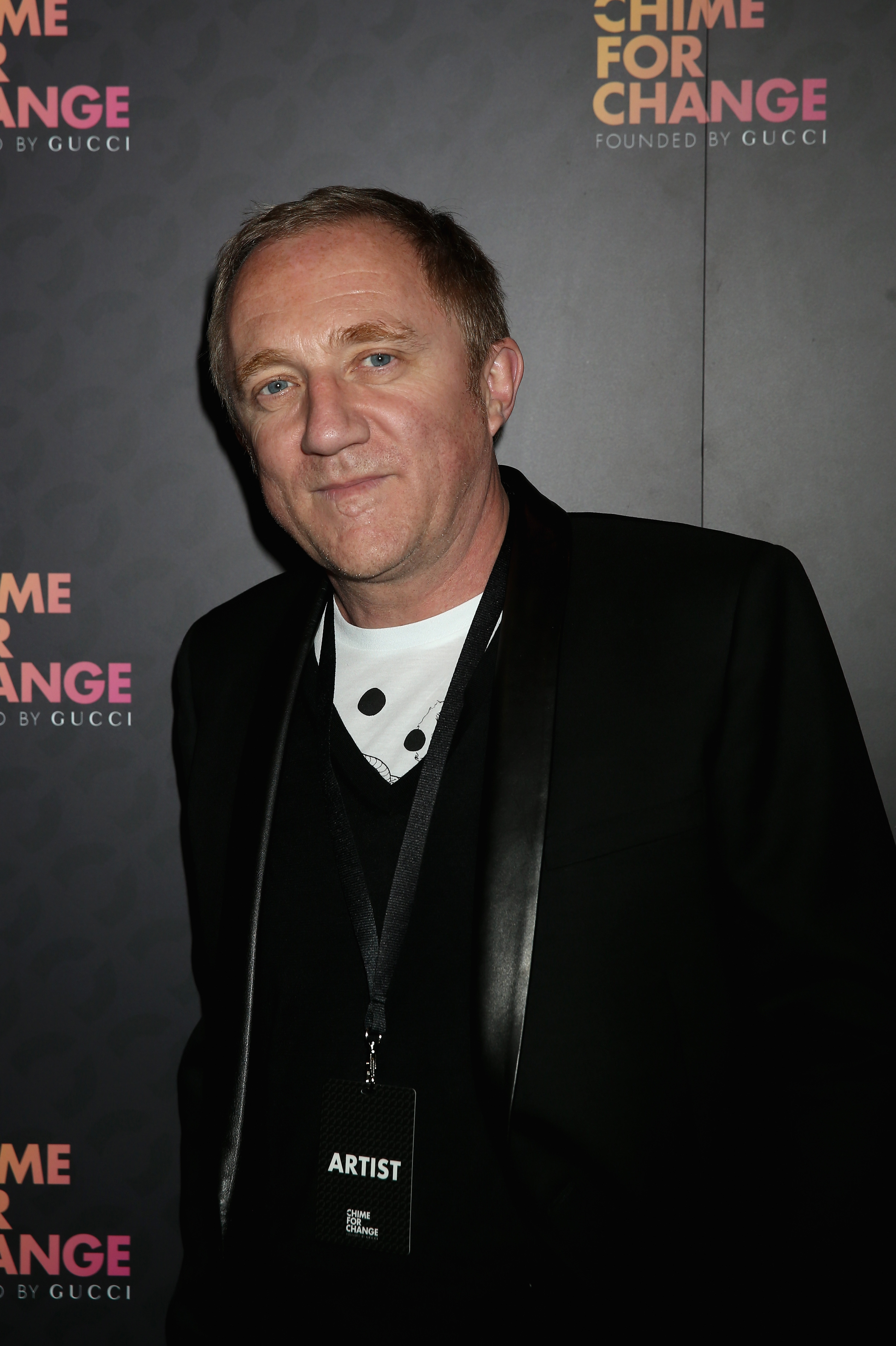Last night at Parsons, a discussion on sustainability in the fashion industry was held between chairman and CEO François-Henri Pinault, Natural Resources Defense Council director Linda Greer, Parsons AAS program director Timo Rissanen, and Parsons creative advisor Simon Collins. It was a packed house, with last-minute arrivals forced to stand or search for seats in the nosebleed section of the auditorium. We spotted ELLE editor-in-chief Robbie Myers with her creative director, Alex Gonzalez, as well as W‘s Stefano Tonchi and Style.com’s Dirk Standen. When the Kering head honcho is in town, tout le monde shows up. Without further ado, here’s a breakdown of what was discussed, including what these industry vets had to say about sustainable design and its future…
What are some of the programs Kering has developed to help its designers create sustainable clothing?
“When designers are in charge of a collection, they don’t have time to find the sustainable fabrics. Three years ago we put into place the Material Innovation Lab, which is a library of 1500 sustainable fabrics that we’ve been working with for our vendors.”—Pinault
“We found two processes to get rid of the heavy metals in leather tanning, which is very difficult, for Bottega Veneta and Gucci through a university in Germany and one in Switzerland. We’re already producing 15 percent of Gucci’s leather production with this new process of tanning. It’s more costly, for sure, so it’s still not available to much of the industry. But as we grow in volume, I’m pretty sure that we will be able to make this technology available to not only luxury, but also to all of the segments within the industry. We will share the technology with anyone who wants access to it on a free basis.”—Pinault
“Along with H&M, we are doing a collaboration with a young British company called Worn Again. They’ve been developing a technique that enables separation of the cotton fibers and the polyester fibers from all of the chemicals. Without this separation we cannot reuse the fibers. We are using $65 million dollars of fibers every year and the projection is 90 million pounds of fibers. If we can recycle them, that might change the impact that we have.” —Pinault
Does the average consumer really care if their clothing is sustainable?
“I think consumers are very aware of sustainability, but if you are making clothes sustainable just to sell one more handbag, you better stop. Stella McCartney, for example, is one of the most advanced brands in the world in terms of sustainability. But that’s intrinsic to Stella McCartney herself. It’s just what’s important to her. But you don’t see any signs touting the sustainability in the stores. Brands should be sustainable, because they’re convinced that’s the way things should be done.”—Pinault
Someone has to pay for it.
“When you are trying to do business in a sustainable way you have to make sure that things are very well-balanced. You can’t only move in the direction of sustainability without the business, or vice versa. To give you an example, a few years ago we came out with new packaging for Puma, which was a clever little bag which was completely sustainable and which the consumer could use at home. But we finally discovered that it wasn’t usable for our retailers, because they couldn’t stack the shoes, and they were starting to stop placing orders. So that’s an example of a beautiful idea that’s absolutely not sustainable business-wise. You have to be very careful about that.”—Pinault
It’s not just luxury companies that are on board for sustainable design.
“We are doing a big collaboration with Kering in Italy called Clean by Design, but we’re doing that same project with a set of mass retailers from their manufacturer in China and the biggest participating company in terms of level of enthusiasm is Target. Sustainability is not just about luxury. With Clean by Design, we’re helping companies to improve their production efficiencies and their water, energy, and chemical uses. By reducing these, they save money. It’s a win-win for the environment and business.”—Greer
There are sustainable items the industry can do without.
“Organic cotton T-shirts drive me crazy. I get a lot of emails from people in the industry that love to tell me about what kind of things they’re doing. But I get so many emails that say things like, ‘We’re a start up and we’re doing this organic cotton T-shirt…’ and my first question always is, ‘Well, why does it exist?’ The fact that it’s sustainable and it exists doesn’t make it OK. The world really doesn’t need another sustainable cotton T-shirt. We have enough to take us through the next 20 years, at least.”—Rissanen
How can consumers influence sustainability practices in fashion?
“Right now as a consumer, it’s very hard to tell what clothing is sustainable. It’s not like food, where it’s labeled as organic. I do think we will get there eventually, but people need to start paying attention to the companies they are buying from. Kering, in many ways, is a leader. H&M is also a leader and that’s surprising since they are a fast fashion retailer. They could make a little less and I’d be happier, but they are beyond the T-shirt level of sustainability. With just a little research on the internet you can find out what some of these companies are up to. Actually, we have created a ranking system with a Chinese NGO for coporate responsibility for factories and their supply chain systems in China called the Corportate Transparency Information Index. You would be surprised who’s at the top and who’s at the bottom of that. It’s really the consumers that can start sending the message.”—Greer

